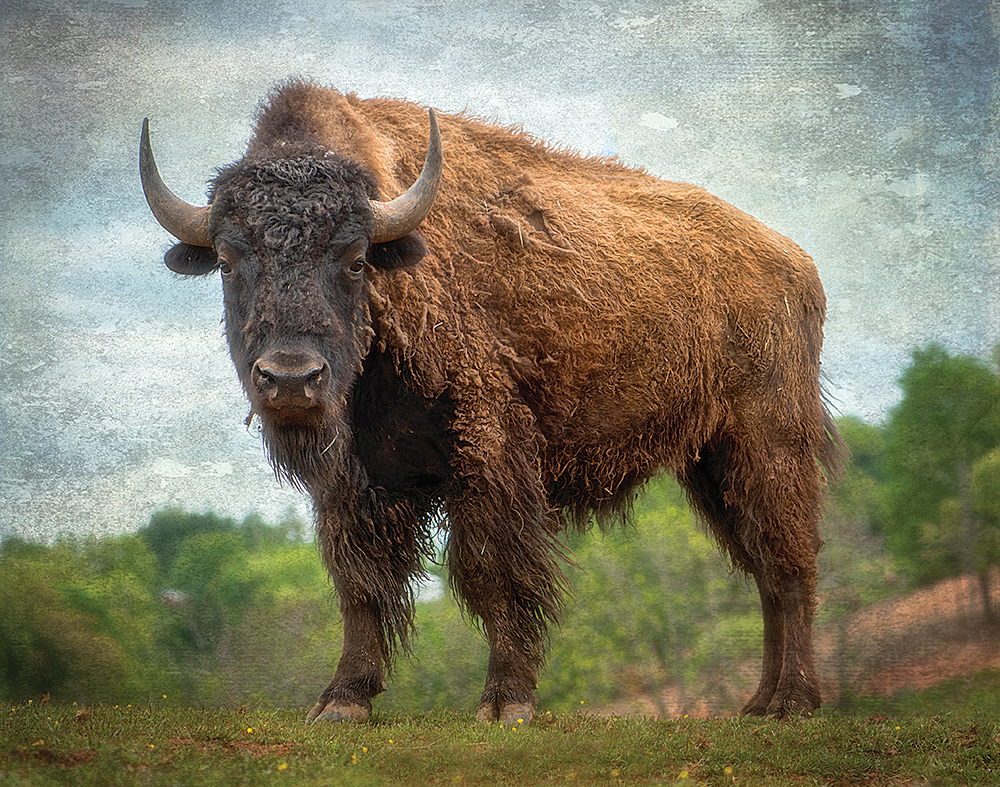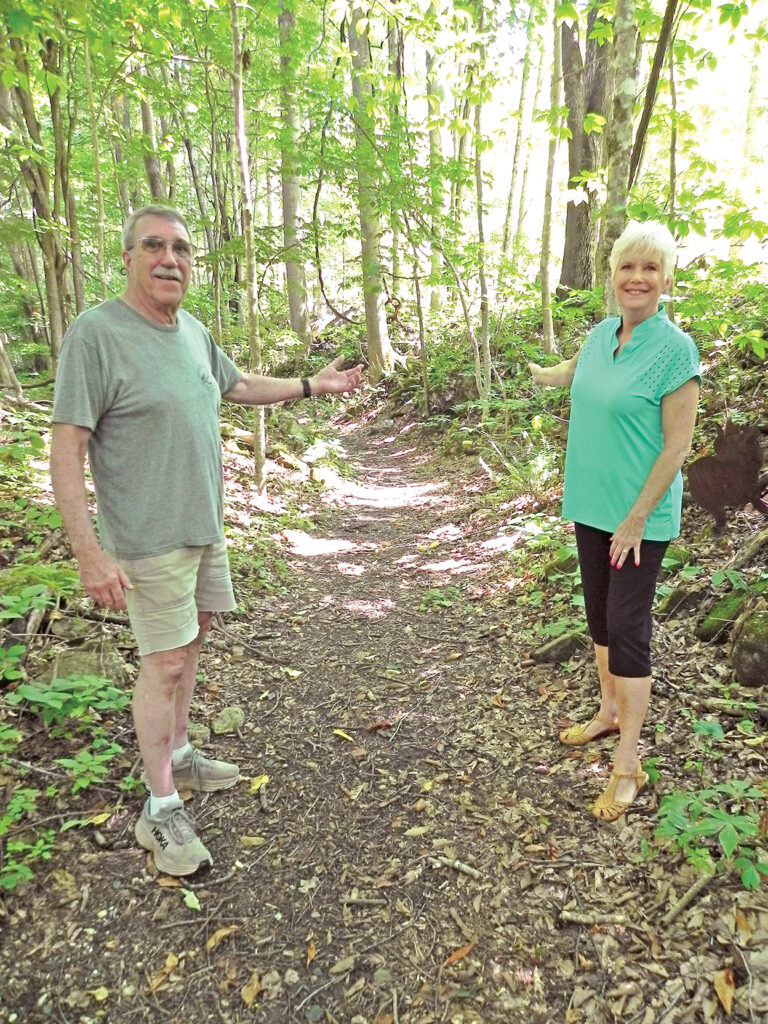
By Bill Derby, Publisher
Valda and Chuck Holyfield who moved from Johnson City into the beautiful Flag Pond, TN mountain area of Unicoi County were following a trail blazed centuries earlier by the Eastern Wood Bison later named by European settlers as ‘buffalo.’
The Holyfields who had purchased property from a Flag Pond long-time local resident built a beautiful log home along with cabins on the property and later started to rent their extra cabins, ‘Holyfield Hideaway’ to vacationers, through VRBO and Airbnb. Local historians told them a long ago deserted trail was created by migrating buffalo and used by the Cherokee Indians and later as a wagon trail.
Local author, Taylor Barnhill, from Mars Hill wrote: “Two trans-mountain migration routes of the eastern wood bison roughly followed the French Broad River and what is now I-26 from Asheville to Sam’s Gap and into east Tennessee. Elk were also common and would have shared the same trails and migration routes. Many of these paths naturally became the ancient “traces” and trading paths of the Ani Kituwah or Cherokee people and, later, European emigrant settlers. Remnants of old bison trails can sometimes be found today on mountain farms and forest lands, distinguished by deeply sunken paths with old, mature trees growing from high embankments.”
Chuck and Valda’s ‘buffalo trail’ runs right through the middle of their property and gives them the opportunity to share this history with the numerous guests who stay in their cabins.

Chuck said, “I love telling the young children about this history and that they are actually standing on a 10,000 year-old buffalo trail created by the heavy buffalo with flat hooves that made the path.”
Other exciting history includes many stories about the local Cherokee tribes who lived nearby. Chuck showed me an extensive collection of Indian arrowheads and spearheads he found on his property and nearby. One black flint arrowhead is estimated to be 12,000 years old.
Chuck shared how the Sams property and area was first inhabited with this historical recollection. “In 1818 the James and Mary Sams family came out of Forks of Ivy, NC headed to California with four children, four slaves, two cows, a wagon and two horses traveling on the wagon road created by the buffalo. While on their way over the old road their wagon suddenly broke an axle right on the Holyfield’s property. Mr. Sams then told his family they would have to camp right there and get everything out of the wagon, unload it all and cut down a tree to rebuild the axle.
“Mary Sams got up the next morning listening to the birds singing and saw three deer standing nearby looking at her. She went up to James and said, ‘James why would we go anywhere else? Why don’t we stay here?’”

He said ok and they built a log cabin. The old 205 year-old chimney still stands on the Holyfield property today.
The Sams family lived there four years until issues with about 300 Cherokee who lived in the fields nearby. The Cherokee burned down their cabin to run them off. They didn’t try to kill them but just wanted them to leave. The Sams family went down the trail and built another log cabin and lived in it for one year. Later the Indians also burned it down. The Sams finally moved further down the road to where the old Sams house is currently located and built another cabin.
The Sams four slaves were part of their family and the old homestead later became the first black school and first black church in Unicoi. Their slaves were like their family. Mary and James are buried in the nearby woods and their slaves are buried all around them.
Chuck and Valda also shared the Sams family became part of the ‘Underground Railroad’.
Chuck explained. “The Sams Gap area over to North Carolina and ridgelines into Virginia were part of this ‘Underground Railroad’. When slaves started escaping out of Georgia and South Carolina this was one of their main escape routes.
“The Sams had three cabins built up on the mountain where they hid runaway slaves. When they would get a group traveling from Devil’s Fork Gap to Sam’s Gap the Sams family would feed and take care of them and keep them hidden. During the day a man would walk over to this area and when it got dark would take this group to Spivey Gap and then another group from Devil’s Fork Gap would come to the Sams property. They then would hop scotch north up the gaps at night. When they had traveled six gaps and down into Damascus, Virginia, the slaves were considered free. Not many people are aware of this history. It is fascinating to know our region played an important part in this freedom,” Chuck concluded.
In addition to the Holyfield’s cabin rentals Chuck offers other services for their guests. He said, “I take guests and others to a starting point to hike a gap or the Appalachian Trail. They can leave their car at the end of the trail and then hike back to their car. We can also pick up hikers on the Appalachian Trail to spend the night. It’s just an extra service we offer.”
Chuck and Valda also wanted to share their feelings of living in our area and exclaimed, “We feel so fortunate and blessed to have grown up in Johnson City and East Tennessee. We had wonderful childhoods, enjoying the small town life and the great outdoors. Raised in Christian families, we had wonderful church ministers, leaders, and school teachers. (We are both from 7th generation East Tennessee families- Chuck is a descendant of Robert Young of Johnson City and Valda descends from the Kings of Kingsport and Bristol.) We never expected to live anywhere else but that pioneer spirit is in our blood.“



